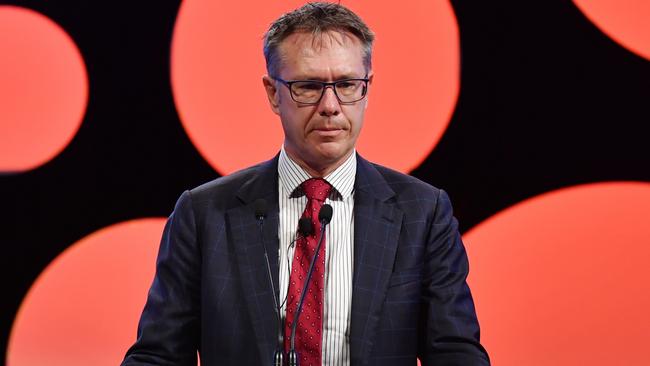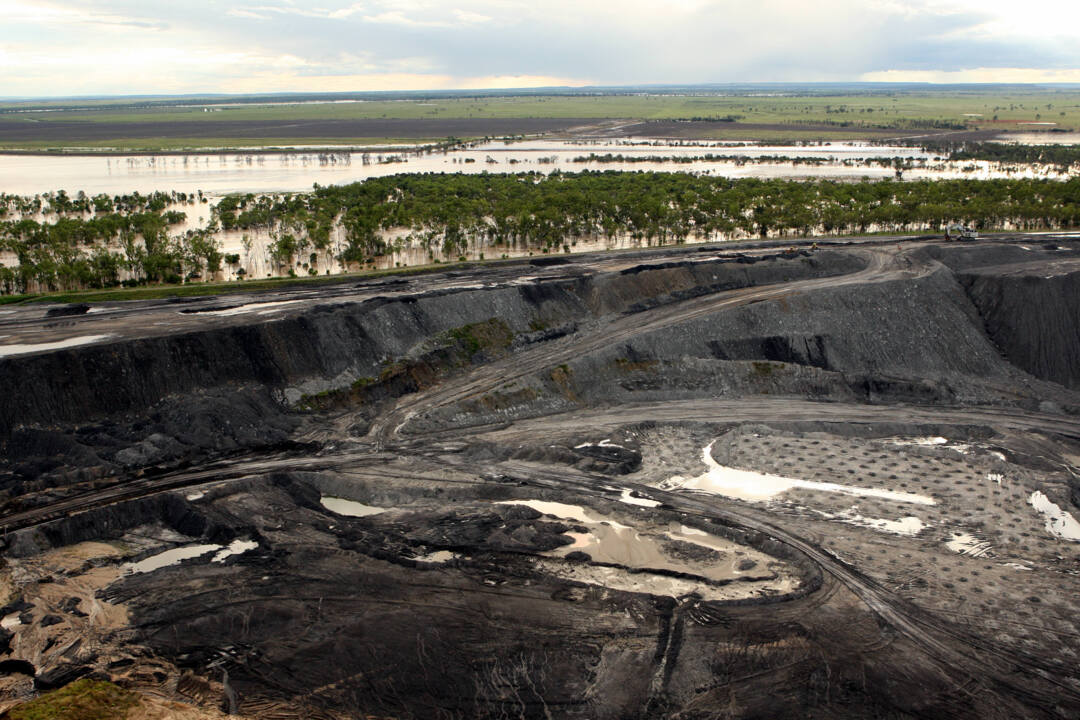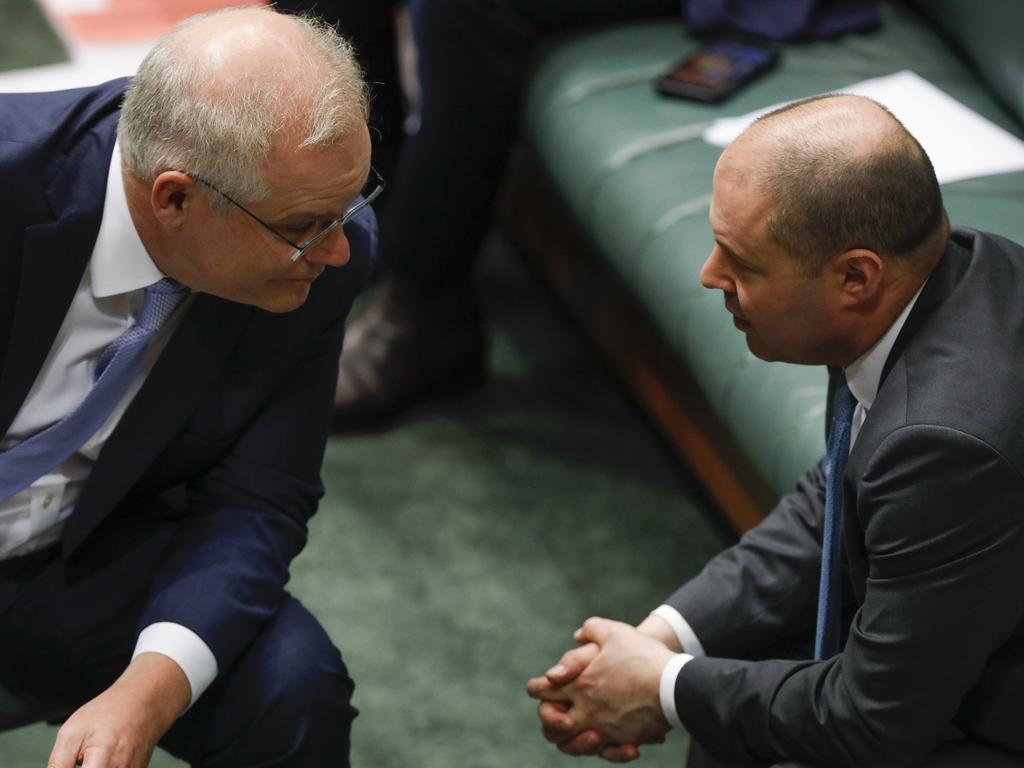The RBA is ready to do more to support the economic recovery, says deputy governor
The Reserve Bank is ready to do more to support the economy through an ‘uneven’ recovery, says Guy Debelle.

A budget day rate cut is more likely after RBA deputy governor Guy Debelle said the central bank stood ready to do more to support the economy through a “bumpy and uneven” recovery from the worst downturn since the 1930s.
The Reserve Bank slashed its official cash rate target by half a percentage point to 0.25 per cent in March as part of a “shock and awe” monetary policy package which also included a multi-billion-dollar bond-buying program aimed at keeping three-year rates pinned to the cash rate.
Economists have debated the efficacy of further monetary easing but, speaking at an Australian Industry Group event on Tuesday, Dr Debelle was unequivocal: “It is possible to further reduce these interest rates.”
That statement was accompanied with a downbeat assessment of the post-COVID recovery: “Overall, the recovery has not been a rapid bounce but more of a slow grind.”
As expectations build the Morrison government will cast aside years of fiscal prudence to announce a historically big-spending budget centred on boosting growth and jobs, Dr Debelle said the RBA “continues to assess other policy options”.
Economists interpreted the speech from the country’s second most senior central banker as a signal of an imminent rate cut.
NAB chief economist Alan Oster said he now expected the RBA to cut rates to 0.1 per cent at either its next meeting on October 6 — the same day as the federal budget — or at the following meeting on November 3.
“Why would they (the RBA) do a speech like that without cutting rates?” Mr Oster said.
Suncorp economist Paul Brennan agreed, saying “given the renewed concerns about global growth momentum with the second wave of infections and return of restrictions, the probability around the RBA bringing these rates closer to zero are probably close to 50-50”.
It would not be the first time an RBA rate cut coincided with a federal budget. Former governor Glenn Stevens kicked off a monetary easing cycle in May 2016 on the same day as then treasurer Scott Morrison handed down his budget.
Dr Debelle appeared unmoved by more upbeat recent data, such as a solid lift in household spending through the quarter to date.
Despite a surprise drop in the national jobless rate in August to 6.8 per cent, he said the improvement in the labour market was “likely to be bumpy and uneven”.
“We still expect the unemployment rate to rise from here,” he said.
RBA governor Philip Lowe has made it clear that with monetary policy nearly exhausted after years of falling rates, fiscal policy will be the key to rebuilding the economy after it contracted the most on record during the June quarter.
Mr Oster said he doubted cutting rates would make much difference to stimulate growth and jobs, saying “the cost of money is not the main cause of friction in the economy”.
Nonetheless, Dr Debelle said “given the outlook for inflation and employment is not consistent with the bank’s objectives over the period ahead, the board continues to assess other policy options”.
One such option was to lower rates “a little more without going into negative territory”.
The RBA’s three-year bond rate target is 0.25 per cent, while the cash rate — officially also at 0.25 per cent — is trading at around 0.14 per cent, suggesting any cut would be limited to 15 percentage points.
Dr Debelle reiterated the RBA’s aversion to going further, saying the evidence on negative rates was “mixed”. He said while pushing the cost of money below zero could “contribute to a lower exchange rate” in the short term, the beneficial impact could “wane” over the medium term, “including through the effect on the financial system”.

Dr Lowe has indicated that negative rates can damage bank profitability and so crimp their willingness and ability to lend.
“Negative rates can also encourage more saving as households look to preserve the value of their saving, particularly in an environment where they are already inclined to save rather than spend,” Dr Debelle said.
He also canvassed expanding the RBA’s bond purchase program — which is focused on keeping three-year rates at 0.25 per cent — to include longer maturity bonds.
While lowering the 10-year bond rate would do little to affect borrowing costs across the economy, buying longer maturity debt “can contribute to a lower exchange rate,” he said.
There are concerns that the resilient and even strengthening Australian dollar through the COVID-19 recession will drag on the recovery by making exports less competitive, but Dr Debelle effectively ruled out currency intervention in the current environment.
“That said, a lower exchange rate would definitely be beneficial for the Australian economy, so we are continuing to watch developments in the foreign exchange market carefully,” he said.
Dr Debelle said the scale of the decline in economic activity around the world presented a “daunting picture”.
The recession has hit household and business spending hard, he said, despite the extraordinary and well-timed government stimulus measures which, unusually, over the three months to June sent incomes higher through the sharpest quarterly decline in activity since the 1930s.
“That shortfall in demand will be a significant brake on the recovery,” Dr Debelle said. “Until households and businesses are confident about future demand and income, they will be reluctant to spend and invest.”
He defended the size of packages such as the JobKeeper and the JobSeeker supplement, saying they were “entirely appropriate and timely” policy responses. “Absent the stimulus, the decline in GDP and employment would have been significantly larger and there would have been much greater financial hardship. That households saved a large amount of this income support means that their sheets are in a considerably better place than would normally be the case in a recession. They are better placed to support the recovery as it unfolds.”
Subscribers can sign-up to receive budget newsletters at theaustralian.com.au/newsletters








To join the conversation, please log in. Don't have an account? Register
Join the conversation, you are commenting as Logout